International Auto Sound Challenge Association
The Standard by Which Great Mobile Electronics Performance is Measured
Pronounced ‘eye-ask-ah’ the association was formed in 1986 to promote the mobile electronics industry. What resulted was a great way to have a lot of fun with your car audio system, meet other car audio enthusiasts, share information and learn more about the field of mobile electronics.
The rules of engagement were made and the first IASCA competition was born.
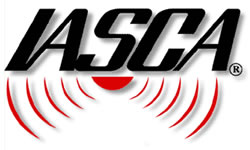
The contests are split into two main camps: the ‘Boomers’ and the ‘Tweaks’ or more properly SPL for Sound Pressure Level (or more simply ‘how loud can your car go?’) and the SQ or Sound Quality side. The latter is all about sound but also most definitely about craftsmanship and artistry and skill in all the myriad of electro-mechanical installation techniques that exist.
There are divisions within each area so that you get to compete with like-level folks. It’d be unfair for your first ever contest to go up against an expert with a shop or some bloke who gets free woofers. So classes are divided by the level of rigour in judging and experience level as well as equipment similarity. It gets pretty detailed but it’s about strict fairness being applied&;
The Sound Quality Divisions
Rookie
The first is called Rookie and is about the Noobs. If you are new to this sort of thing, you’ll get judged with other Rookies to a simple set of sound and install rules. It is designed for newcomers to car audio competition who want to have a great time showing off their systems. You’ll learn about sound and installation quality, what SPL means and get your car tested by an RTA. (A Real Time Analyser – we are getting one from Audio Control just like they use, for our reviews section.) It’s a relaxed environment where the judging is not so intense.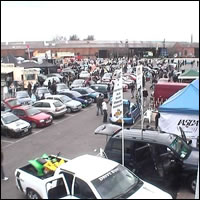 The intent of the Rookie division is to provide an entry-level contest category to compete in that mostly evaluates the system’s sound quality and key points of installation quality and promotes a system that is safe to operate. The motivation is to give Rookies more experience to further their knowledge of their own system and mobile electronics overall. Rookie Competitors must have never before competed in an IASCA sanctioned contest.
The intent of the Rookie division is to provide an entry-level contest category to compete in that mostly evaluates the system’s sound quality and key points of installation quality and promotes a system that is safe to operate. The motivation is to give Rookies more experience to further their knowledge of their own system and mobile electronics overall. Rookie Competitors must have never before competed in an IASCA sanctioned contest.
Rookies must not work for the mobile electronics industry or receive industry support (sponsorship). Competitors may request special privilege to enter this class if, for example, they are a shipping clerk or bookkeeper working for a large electronics department store. The basis for this is that this person would have no technological advantage over other Rookie Competitors from the private sector.
Competitors in this division are limited to one competition season, after which they must make a decision to advance to either Street or Ultimate. Should a Rookie competitor wish to enter one of the advanced divisions during their Rookie year, they may do so. However, once the choice is made, you can’t reclassify yourself as a Rookie. For whatever reason, if a Rookie cannot compete in at least one IASCA sanctioned event in their first season, they may petition IASCA to extend their Rookie status. It’s up to the competitor to notify in writing or e-mail the proper IASCA affiliate office.
In Rookie Division, judging will be performed by one sound quality Judge and one installation Judge (who may even possibly be the same individual). Sound Quality will be judged from the driver’s seat. IASCA Judges are encouraged to be as constructively helpful to the Rookie competitor as possible, giving brief system suggestions and documenting as many helpful comments on the score sheet as possible.
Real Time Output measurements will be taken in this class which combines both the RTA’s skills. Capped at 110dB, you score points for getting 110dB and also points for the RTA linearity score – which is about having a well balanced system. There’s more about how it works later&;.
Street
If you are in Street Division, then your install will be judged more rigorously. This is a natural progression for the last-season Rookie competitors.
The intent of the three-class Street Division is to provide a more competitive entry level format for contestants who do not have the inclination or the budget to build a system with an elaborate installation. The Street format focuses on sound and installation quality and does not award points for installation enhancements.
The Amateur Street class is designed for those competitors who have obtained their systems through standard retail channels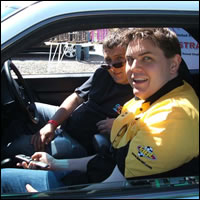 and who have no affiliation or sponsorship from any part of the Mobile Electronics Industry. The IASCA main office or any IASCA affiliate office may request the competitor to produce retail receipts at any time during the competition season.
and who have no affiliation or sponsorship from any part of the Mobile Electronics Industry. The IASCA main office or any IASCA affiliate office may request the competitor to produce retail receipts at any time during the competition season.
An Amateur Street class competitor may compete in this class for a maximum of three seasons beginning with the date of their first competition. This obtains even if their competitor membership expires or they do not compete in consecutive or subsequent seasons. After three years Amateur competitors must advance to the next class level.
The Semi-Pro Street class is designed to offer a more than basic competition format for contestants who may not be employed within the industry but receives sponsorship or discount on equipment from a manufacturer or distributor. Or who chooses to utilize the assistance of an industry professional in the judging process as a co-pilot. This does not include tuning, listening or offering assistance (paid or voluntary) to the contestant by a professional or expert prior to the beginning of the judging process. Or who directly represents and is paid by a particular brand name during a competition. Or who is employed by an electronics store, yet holds the position, for example, of a shipping clerk or bookkeeper, giving them no technological advantage over an amateur but less than a pro.
The intent of the Pro Street Class is to provide a more than basic competition format for contestants who work within the Mobile Electronics Industry in the capacity such as installer, salesperson, technician, or any other position that gives them a technological advantage over an Amateur and Semi-Pro.
That Real Time Output measurement is also done in this scene.
Ultimate
The intent of the Ultimate Division is to provide a more competitive format for contestants who have an extraordinary sound system with a more elaborate installation. Additional points are awarded for cosmetic integration and system enhancements. There are three classes in Ultimate.
Ultimate Amateur class is designed for competitors who have obtained their systems through standard retail channels and who have no affiliation or sponsorship from any part of the Mobile Electronics Industry. Up to 20 enhancement points will be awarded at up to 5 points per item.
The Ultimate Pro class is designed for competitors whether they are affiliated with or have the support of any part of the Car Audio industry or not. Both Sound Quality and Installation Quality are judged and 40 points will be awarded for system enhancements. Up to 5 points per item.
Ultimate Expert class is for those who have Car Audio industry sponsorship or not. A competitor who receives a structured payment or salary from a manufacturer or distributor to build and compete with a system must enter this Division and Class. Once a competitor enters into this class they will remain an Expert indefinitely. Both Sound Quality and Installation Quality are judged by tough criteria. Up to 60 enhancement points can be awarded. Up to 5 points per item.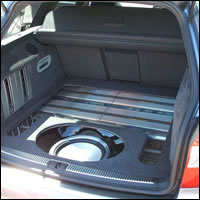 RTO measurements are done in all Ultimate Classes
RTO measurements are done in all Ultimate Classes
RTO (Real Time Output) is a test to show how well a competitor’s system performs at all frequency ranges through the sound spectrum at higher output levels, cancelling out any potential influences from outside sources. We’ve all been sitting at a street light, listening to our music when another individual pulls up beside us with their music playing at insane levels, usually with their bass knob turned up to 11. So, we invariably roll up our windows and increase the volume of our system to drown out the neighbouring music. RTO is designed to show objectively how your system performs in that scenario, measuring the loudness of the system and the smoothness of the RTA curve, then combining both for overall system performance.
Testing is performed from the driver’s seat of the vehicle, allowing the microphone to emulate the driver’s listening position. The AudioControl CM-10 microphone is positioned on a stand parallel with the ground. It’s scored by adding the SPL and RTA scores together and subtracting 100 from the total. A minimum SPL level of 100dB must be achieved to be able to get a score in this section, with the maximum SPL level being capped at 110 dB.
EXAMPLE # 1: A competitor achieves 110 dB in the SPL section and scores 25 on the RTA measurement – 110 plus 25 equals 135, minus 100 equals 35. The competitor scores 35 points on the score sheet for RTO.
EXAMPLE # 2: A competitor achieves a maximum of 107.8 dB in the SPL section and scores 28 on the RTA measurement, so 107.8 + 28 = 135.8, minus 100 equals 35.8. This competitor would score 35.8 points on the score sheet for RTO.
The IASCA dB League (IdBL) Classes
A truly equitable set of classifications exist in IdBL, so that your car competes against systems of a similar level. They are divided into Stock, Advanced and Ultimate divisions and the classes are separated by the amount of cone area your big speakers have, so a bloke with a single twelve inch woofer doesn’t get put up against a nutter with four fifteens!
In Stock, you get three classes which are 1-160sq in; 161-260sq in and 261+sq in. You cannot be an employee in the trade and you can make no modifications to the vehicle, so no walls of woofers allowed. You are allowed one amp per woofer, one capacitor of no more than one Farad and an extra battery but it has to be commercially available. Also, you may have to produce your retail receipts.
Stock Pro is for shop folks and others who want to get serious but whose cars are not mad enough for the upper reaches but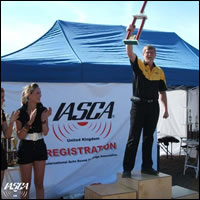 still unfair to pit them against those who pay full price for their kit. There are construction rules about where you can put stuff in your car. They split into just 1-260sq in and 261+ sq in.
still unfair to pit them against those who pay full price for their kit. There are construction rules about where you can put stuff in your car. They split into just 1-260sq in and 261+ sq in.
In Advanced, you get the middle ground. Some modifications are allowed but the nutty ones are not. You can be a trade person or even be sponsored in this bracket. Classes go 1-360sq in, 361- 720sq in and 721+ sq in and all allow a wall of woofers to be used right behind the drivers’ seat. You get two minutes to get your car ready – you can remove a seat! You can use any amount of batteries and as many as two upgraded alternators. Which is bloody serious. These car scan be a mass of ugly woodwork inside but the rules of construction are even more detailed.
In Ultimate, you get the mad 170dB+ scores and 150dB is ‘normal’! Cars with security glass, huge woodwork and mad modifications are all grist to this Big Bad Boys toys mill. It’s actually pretty cool as a spectator sport, too! The nutty rules state, ‘The fetal (sic) position is acceptable as long as there is 18 inches between the knees and the chin’!! it is madness but great fun to witness.
These contests are truly international, with European and ‘World’ finals (they mean North America) but I can tell you the boss of IASCA UK is so very much an enthusiast himself that he is as far as I know, the only bloke to have ever air freighted his car to the USA to enter a competition. His name is John Robinson and he is truly one of the UK’s top mobile electronics legends and a lovely bloke, too, as it happens. Even if touched with Mobile Madness.
[email protected]
www.iascauk.com
07074 722 722

